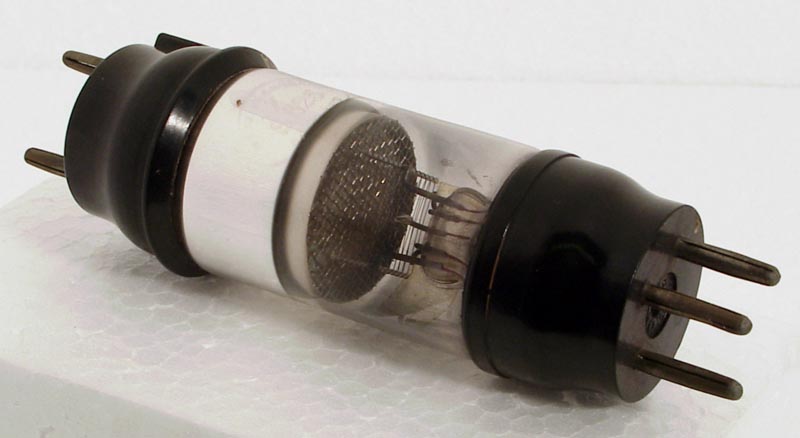
|
This exhibit is an M-OV screen-grid tetrode Type S625 and was probably made early in 1928.Although the principles of screen-grid valves had been explored from 1917 onwards by Schottky (Germany), Round (UK), and Hull (USA), Captain Round's S625 (first introduced in 1927) was a world landmark valve in that it was the first successful screen-grid valve to be used commercially in receiving sets and to merit quantity production. The full reasons for this nine-year delay have never been clearly explained.S625s were manufactured for several years and there are dozens of survivors, many in working order.The S625 is a rare example of a screen-grid receiving valve with a thoriated tungsten filament, rather than a barium or oxide filament or cathode. In designing the S625 Captain Round used the standard filament and grid structure then used in the M-OV Type DE5 triode, mounted sideways. The original samples thus has filament ratings of 5V 0.25 A and are referred to as DES625s in Rounds 1927 book on the subject.However, by 1926/27 the concept of filament adjustment by rheostat was becoming outdated. It is believed that all production valves had 6V filaments and were marked simply S625.Captain Round designed not only the valve but the early Marconi short-wave TRF receivers which used it. This explains the shape of the valve which protruded through a 'just-fit' aperture in a metal bulkhead, thus completely isolating the grid circuit from the anode circuit. Later designers, content with lower RF gain and less perfect screening, preferred the more conventional shape used for later screen-grid types. The S215 was introduced within a year of the original S625 as the double ended design proved unpopular with broadcast set designers.Round's early SW receivers using S625s remained unsurpassed until the development of good short-wave superhet techniques in the 1930s.The electrodes are arranged as a set of discs along the length of the valve from one base to the other. The 'V' shaped filament is enclosed by the wire cage of the control grid, this is loosely wound on notched rods. These electrodes are taken to the base three pins. The screen grid is a metal mesh disc that is held on the top of a cylinder that encloses the anode. The anode is not visible. The top pins connect to the screen and anode.See also The ARS6.The wide glass tube envelope is 30 mm in diameter and, excluding the B4 base pins, is 92 mm tall.References: Private communication & 1005 Type S625 was first introduced in 1927. See also 1927 adverts. |
Updated March 22, 2022.
|
|